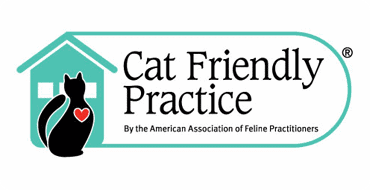We’ve all heard how obesity has become an epidemic in this country. Unfortunately, it’s spilling over into the pet population as well. We show our pets love with food and treats. Combine that with our increasingly sedentary lifestyles, and you can start to see why I rarely get through a work day without seeing an overweight pet.
It starts out innocent enough…you adopt a cute little puppy. He’s growing so fast you just let him eat as much as he wants. Then there are the puppy classes where he gets lots of treats to reward good behavior. He’s already got a little extra roll of skin behind the shoulders, but he’s just so cute! Once he gets neutered he starts getting a little chubbier, so you switch him to adult food but he just keeps gaining weight! You try the “light” version, but it doesn’t make much difference. Now what?
The first step is to understand why obesity is a problem. If you don’t care that your pet is overweight, let’s be honest, you won’t say no to those soft brown eyes looking longingly at that bag of potato chips you’re enjoying. Obesity has been linked to severe arthritis, diabetes, heart disease, and respiratory compromise. It can interfere with a thorough physical exam (it’s hard to feel a mass in a belly stretched tight with abdominal fat) and make anesthesia and surgery more of a risk.
Studies have shown that healthy weight dogs live significantly longer and healthier lives than their overweight counterparts. Here is a link to an abstract of one Diet restriction study. In this study 48 Labrador retrievers were paired up at 8 weeks of age. One dog was allowed to eat as much as it wanted, and its pair was fed 25% less than what the first dog ate. This was done for the entire lifespan of the dogs. The study showed the dogs that were fed less food were leaner, had lower triglyceride, insulin, and glucose levels, had later onset of chronic diseases (such as arthritis), and lived on average 1.8 years longer compared to the free-fed dogs. That’s a lot of time in dog years!
These same issues apply to cats as well. We have moved our cats indoors to keep them safe from very real dangers, such as predators, cars, and contagious diseases. Indoor cats tend to have less stimulation in their environment, which leads to boredom. Having food out all the time allows them to eat as much as they want whenever they want, and often they are just eating out of boredom. So naturally, less activity and constant grazing leads to fat cats.
So how do we fix the problem? A great place to start is with a wellness exam with your veterinarian. Your vet can tell you what your pet should weigh, and can provide tips and suggestions on how to get there. Here are a few common recommendations we make to clients that may help you out as well.
1) Measure the food (with an actual measuring cup)! This is really the simplest way to control weight. Your vet can tell you how much food to feed if they know the amount of calories in a cup of your pet’s food. Most food packages will provide a suggested feeding amount based on weight. If you have a 20 lb pet that should weigh 15, feed them the recommended amount for a 15 pound animal. Keep in mind these recommended amounts may be more or less than what your individual pet may actually need, depending on their exercise level and genetic factors. Weighing them monthly while on their diet will help determine whether you should increase or decrease their food.
2) Limit the treats! Giving your 50 lb dog a hot dog is equivalent to you eating 3. Those calories add up fast! I would just avoid feeding table scraps altogether. Not only do they add calories, some spicy, fatty or greasy foods can cause stomach upset. Got kids that like to sneak food under the dinner table? Train the dog to go to his bed or kennel while you eat dinner. Better yet, give them their dinner while you eat, and put it in a food puzzle (check out this blog post by Dr. Marty Becker) so they can’t scarf it down in 2 seconds. If you have a puppy you are trying to train, use the kibble they would normally get for meals as rewards instead of adding lots of extra treats to their calorie intake. And if you just can’t help yourself, try offering raw carrots or green beans as a low calorie treat option.
3) Exercise! It works for pets as well as people. Spend at least 15 minutes a day playing with your pet or going for a walk or jog. Get your cat to chase the laser pointer or feather toy for 5 minutes at a time, 3 times a day. Rotate which toys are available each week so they have some variety (and you don’t have to keep buying new ones). Put your cat’s food on top of a cat tower or table so she has to work for it a little. Food puzzles are great for cats or dogs to get them to move around a little more for their food and provide some mental stimulation. You can even hide their food in different areas in the house each day, so they can go on a “hunt” for it while you are gone.
Your vet can help you troubleshoot if you are having a hard time; I know putting pets on a diet is definitely easier said than done. Managing households with multiple pets that eat each others’ food will require a more in depth discussion with your vet. He or she may recommend testing for medical conditions that could be affecting weight (such as hypothyroidism). Your vet can also provide you with information about a variety of prescription foods made specifically for weight loss.
So take heart! The battle of the bulge can be won! Doing so will improve your pet’s quality of life, and possibly lengthen it too.


